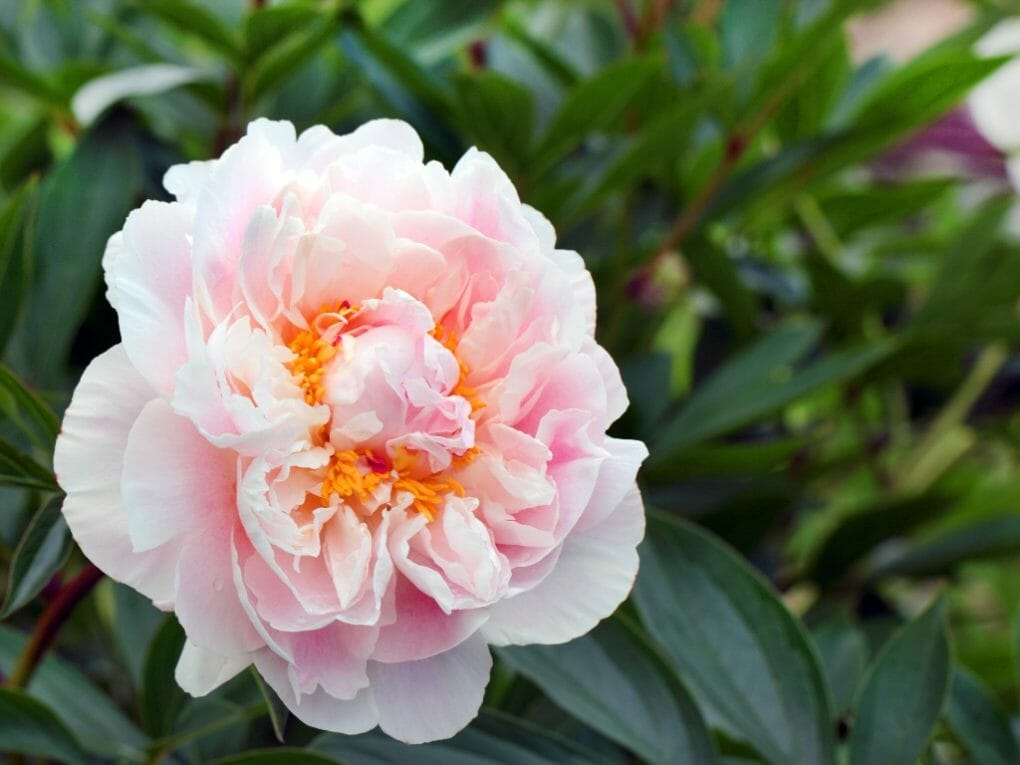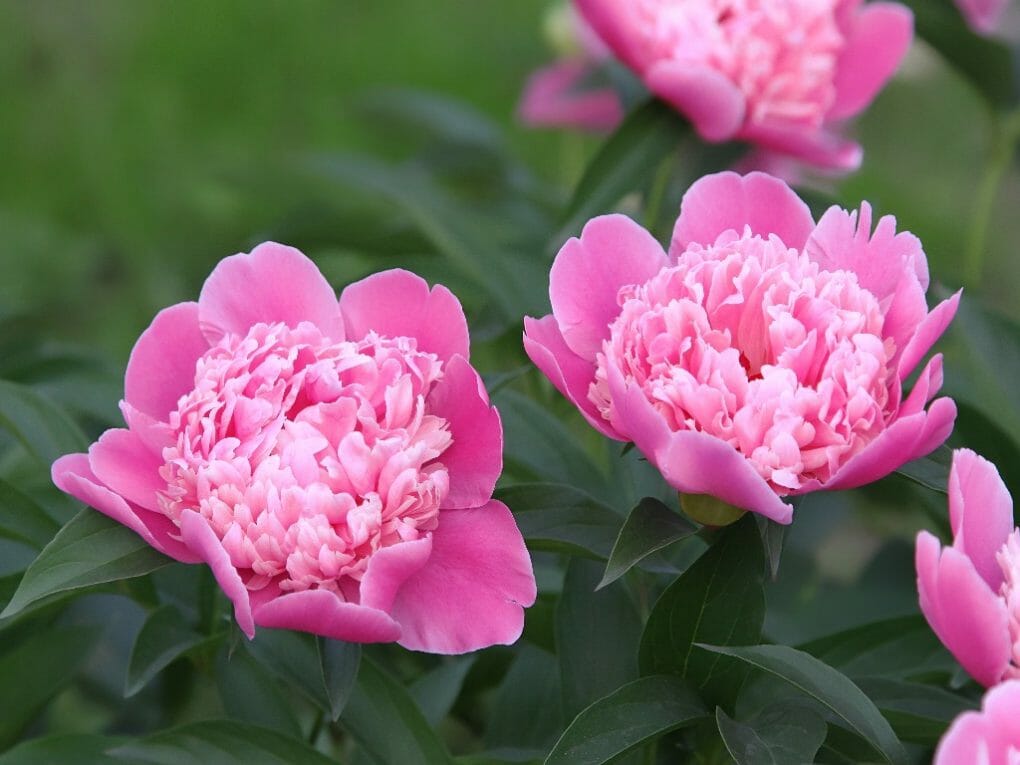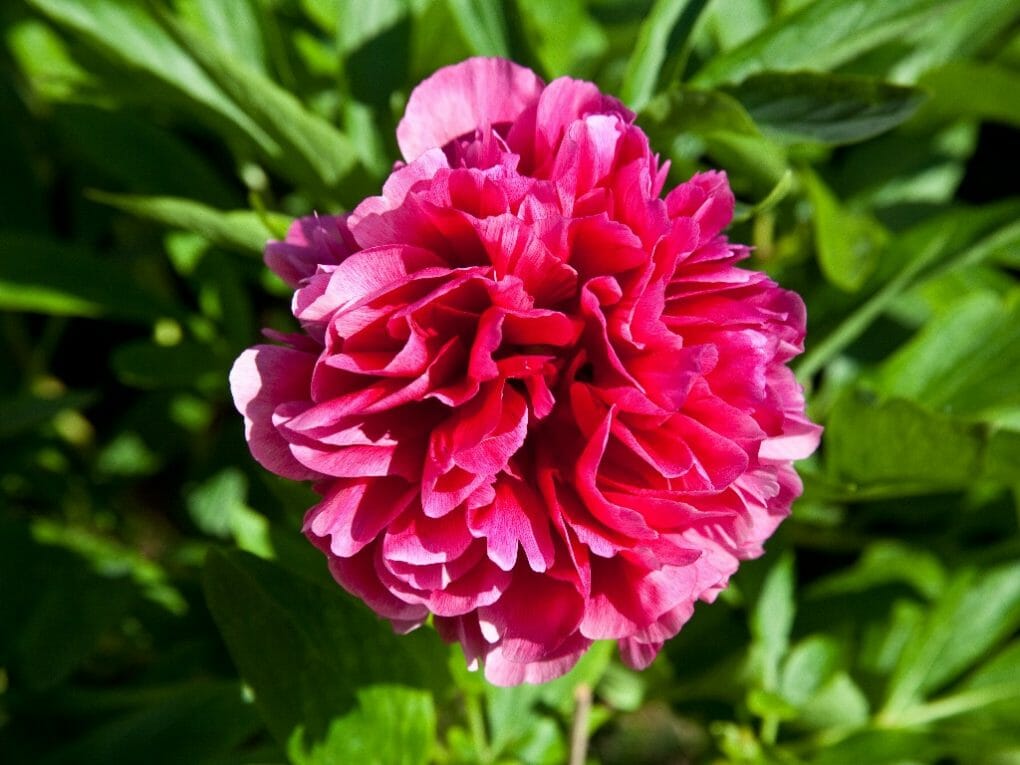Supporting Peonies: Staking Tips to Prevent Peonies from Toppling Over

Peonies, herbaceous perennial flowers, are highly regarded for many reasons. They look stunning when in bloom, need almost no maintenance, and can last forever. Peonies can live in the same location for a century if given the right conditions.
Peonies are widely cultivated and appreciated for their beauty and diversity, with a wide range of available varieties and hues. These stunning ladies enjoy basking in the sun but appreciate a little shade in the middle of the day. The only real drawback to peonies is that they often take the day off and lounge around in the grass.
Peonies rest on the day they bloom. They don’t even have proper employment. But even though all they have to do to fulfill their role is stand tall, they keep failing just as they begin to show signs of blossoming. The issue is that peony flowers tend to be quite cumbersome.
The buds are so heavy that the stems collapse under their weight when they open, creating an unsightly mass of overgrown grass. This is an ongoing issue for peony growers. The good news is that you can fix the problem by installing some support for your peonies. Check out some tips here!
Table of Contents
Staking Tips to Prevent Peonies from Toppling Over
Most gardeners need help with forgetfulness. People’s attention shifts away from the peonies as they awaken from their winter slumber. Since most gardeners have other commitments in the spring, yard work often takes a backseat.
Rather than going to the garden center to pick up some support, many people snip the buds and bring the flowers inside to brighten the room or the table. While incorporating peonies into your interior design is always a good idea, the simple solution to drooping peonies is often put off until the following year.
Help for your Peonies
In the past, sagging plants could only be propped up using simple stakes, as more elaborate solutions required more time and effort. To prop up a drooping plant, hammer or mallet a stake into the ground and then tie it to the plant with a ribbon or string. Because peonies bloom in such dense clusters, and each stem needs support after the flower has faded, this is more trouble than it’s worth.
Driving twenty or more stakes into the ground for a single cluster of peony flowers seems like an excessive effort, given the already laborious nature of gardening. Thankfully, those days are long gone. Modern gardeners have invented and patented several practical support options to help peonies, and other plants withstand the effects of weather extremes, wind, and their natural top-heavy structure.
Once your flowers have grown into their respective supports, many of these structures will be nearly undetectable. Some are more noticeable than others and are meant to be decorative and supportive. Feel free to browse, pick out some favorites, and place an order. Your peonies will be eternally grateful to you for all your hard work.
Develop Within the Mesh of Hoops

Planting peonies in a grow-through hoop is a smart idea. Peonies are clump-forming flowers that require more structural support than a single hoop can provide; as a result, a round hoop with a grid is ideal for growing peonies. The grid layout provides separate growing areas for each flower (or cluster of two or three flowers).
You’ll need to adjust this support system as your flowers get taller. As the plant grows, raise the grid on the stakes to accommodate the new height. As your flowers mature, this pattern will become almost invisible. Just cut back the peonies to an inch or two in height once the growing season is over, lower the grid, and store the whole assembly away until the following year. You can put it away if you want to, but if you want to save time next year and ensure that your peonies return to the same spot, leave them where they are.
Grow Through Tomato Hoops
These tomato plants are better suited to the grow-through hoop supports than the peonies. It’s the same concept as the hoop grids we covered earlier, except there is no grid to keep the flowers apart; instead, they all grow through the central hoop.
While a single hoop isn’t ideal for peony clusters, some gardeners swear by using tomato support hoops instead. In addition, some peony clumps are less dense and more spread out than others, and as a result, they thrive when given a bit of extra room. The grid may look like the best choice, but it’s always smart to listen to the advice of experts. There’s got to be a good reason why peony farmers use tomato hoops instead.
Lattice-Topped Fences
If you’re a huge fan of peonies and want to grow more than a few scattered clumps, you’ll need to give those plants some structure to lean on. Your peony garden should have a wire fence around its outside. You can use ribbon to weave a lattice around the fence posts and through the plants once they reach a suitable height. Though necessary for security, a fence can detract from an otherwise lovely garden.
Use stakes instead of a full fence for a similar effect that is more covert. Invest in dark green stakes that can easily blend in with the background foliage for maximum discretion. You can further improve your ability to blend in by selecting a ribbon with a color and size that complements its surroundings.
The best ribbon for blending into the scenery is a deep forest green or jet black. Put to use a heavyweight cotton twill ribbon of 115 pounds in width. If you don’t tie the bow too tightly, this ribbon can withstand harsh weather without restricting growth and development. When weaving your ribbon through the peony forest, be careful not to suffocate the plant stems.
Alternative Methods for Cultivating Peonies

Peonies, especially the larger varieties, can quickly outgrow their stakes. However, if this is the case with your peonies, you still have choices. With the proper tools, any massive fence or grate can be reduced. Bamboo can also be used for posts or beams in a fence for a more organic appearance.
If you’re strapped for cash or want a more rustic look, you could use tree branches instead of stakes. Ingenious gardeners with an eye for design may devise other, more attractive methods of peony support. There is no such thing as improper peony support other than no support.
Both intersectional and tree peonies are self-supporting, requiring only the occasional brace on an abnormally long branch. However, peonies, herbaceous plants, will always require a framework to keep them upright. Fallen peonies are an all too common sight in gardens worldwide. Because a simple and cheap solution can bring about such a delightful improvement in the overall feng shui of a garden, it isn’t easy to deal with toppled peonies as a gardener.
For a serious botanist, seeing peonies scattered about in an otherwise pleasant plant sanctuary is enough to drive them crazy because of the huge difference that supporting them makes and how easy it is to fix. Only put this off as long as necessary if peonies are something you grow.
Avoid rushing the process by cutting them too soon and bringing them inside. Pink peonies in various shades will thank you for your support year after year. Do yourself a favor and cross that item off your list right away. You will one day feel the same way we seasoned gardeners do when we find our cherished peonies scattered across the grass.
